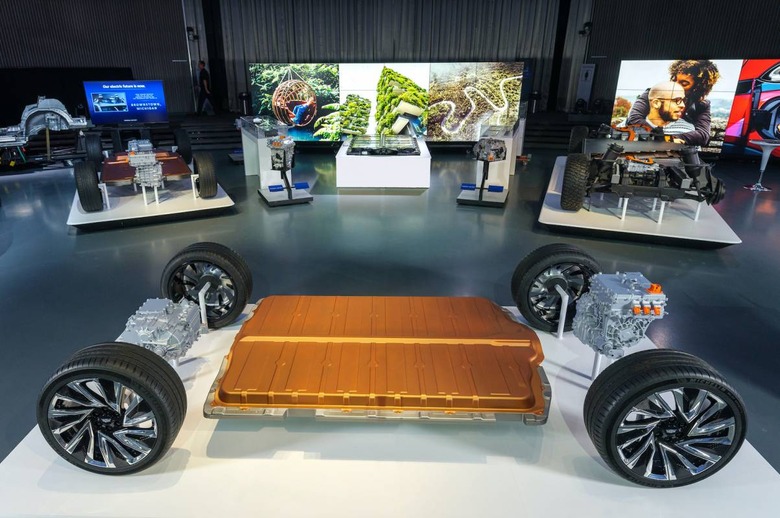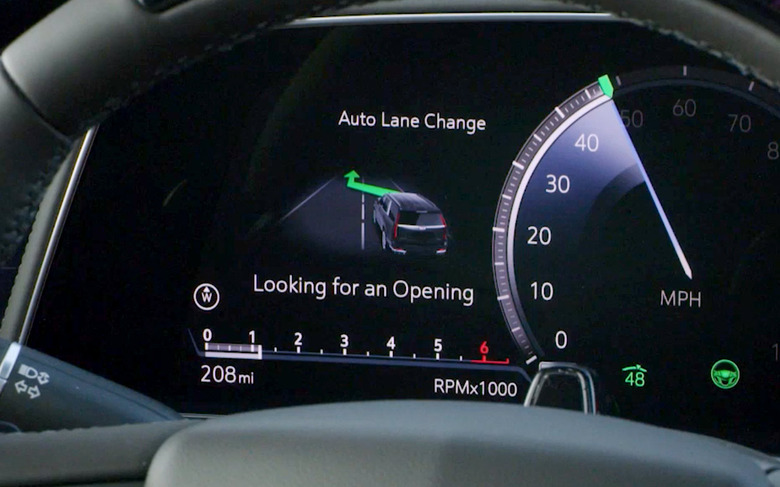GM bets on 5G and EVs with aggressive China roadmap
GM plans to make 5G available on Cadillac cars and offer the high-speed technology on most Chevrolet and Buick vehicles from 2022, the automaker has announced, though only in China. It's one of the biggest commitments to 5G networks that we've seen from an automaker so far, as General Motors looks to drive Chinese sales back up in the face of strong domestic and international competition.
China has been an unexpected sales success for GM over the past few years. Buick saw particular demand there, the attainable luxury nameplate proving popular among Chinese drivers, while the automaker behemoth also has a number of brands that are exclusive to the country. Multiple models offered in China are developed specifically for that audience, ranging from tiny EVs through to large SUVs.
Today, GM revealed how it plans to continue that. Its Tech Day event saw the Ultium electric vehicle platform take center stage, the same technology of batteries and a flexible architecture on which to build a wide range of EVs first announced in March, along with plans to make more than 40-percent of GM's new launches in China in the next years electrified. It'll also lean heavily on local companies in the market.

"They will all be manufactured in China, with almost all parts coming from local suppliers," GM says of the new EVs. "The state-of-the-art Ultium battery system and third-generation global electric platform will integrate GM's engineering flexibility, technology advances with highly localized manufacturing, and supply chain in China to enhance quality and cost competitiveness."
For connected cars, there'll be a China-specific system, GM says. This year will see the first V2X vehicle-to-everything system launch in the Buick GL8 MPV, one of the company's Chinese-market specific minivans. That's the handiwork of a joint venture with GM and local automaker SAIC Motor.
However from 2022, 5G will proliferate through the range. Every new Cadillac will offer fifth-gen network support, along with "most" of the Chevrolet and Buick range. "The most up-to-date connected services will be provided through over-the-air updates," GM says. Expectations for 5G – which promises lower latency than 4G LTE networks, along with support for a much larger number of concurrent devices in proximity – are high in the automotive sector, with the wireless technology expected to feature significantly in things like autonomous vehicles, car-to-car intercommunication, and advanced cabin infotainment and entertainment systems.

Super Cruise, GM's Level 2 driver-assistance system which combines adaptive cruise control, lane-centering, and a hands-free attention monitoring camera, will also be offered on the whole Cadillac line-up in China by mid-decade. It'll also be expanded to Buick and Chevrolet models in the market. For the US, Super Cruise is coming to the new 2021 Escalade along with the Cadillac CT4 and CT5, before spreading to other models in GM's lineup. Eventually, the Cadillac Lyriq electric crossover will have it, though production of that car isn't expected to begin until late 2022.
What remains to be seen is just how much of this makes it back to GM's home turf. The automaker was aggressive in rolling out 4G LTE connections in its cars, and now the vast majority of its vehicles sold in North America come from the factory with embedded modems and WiFi hotspot support. Upgrading that to 5G, however, requires significant decisions about things like mmWave versus Sub-6 and other types of 5G network, not to mention the need for much more ubiquitous 5G coverage in order to keep such vehicles connected.
